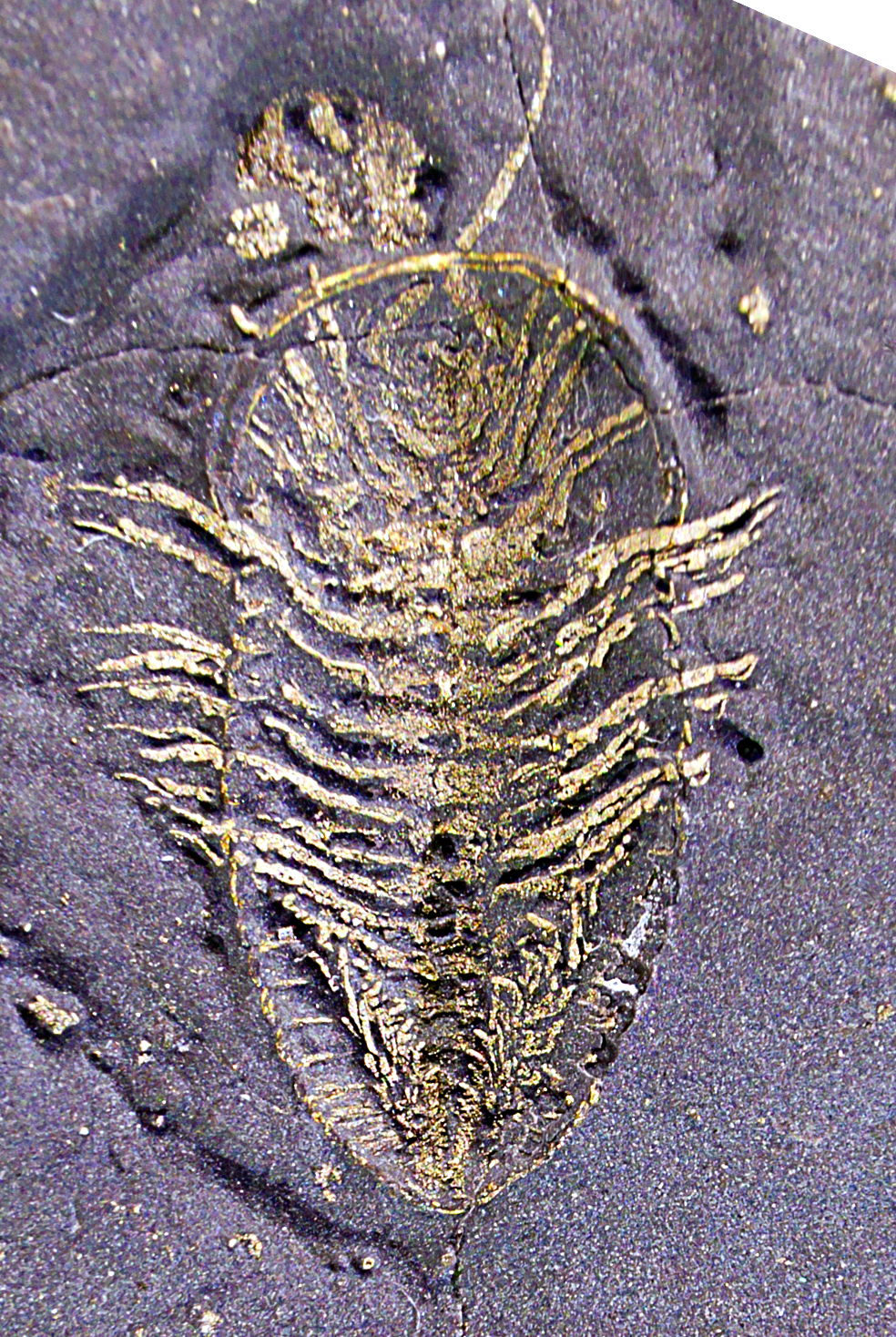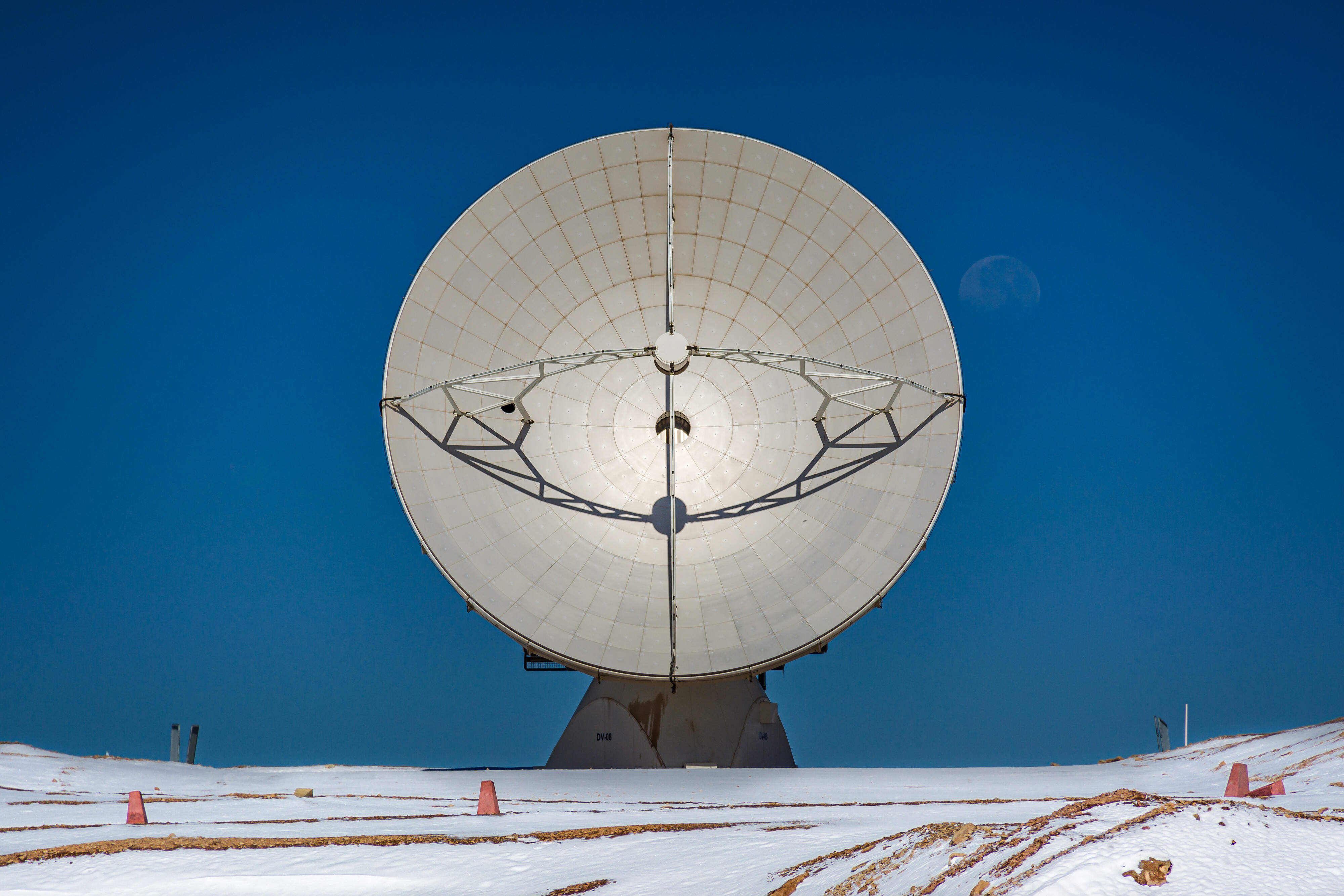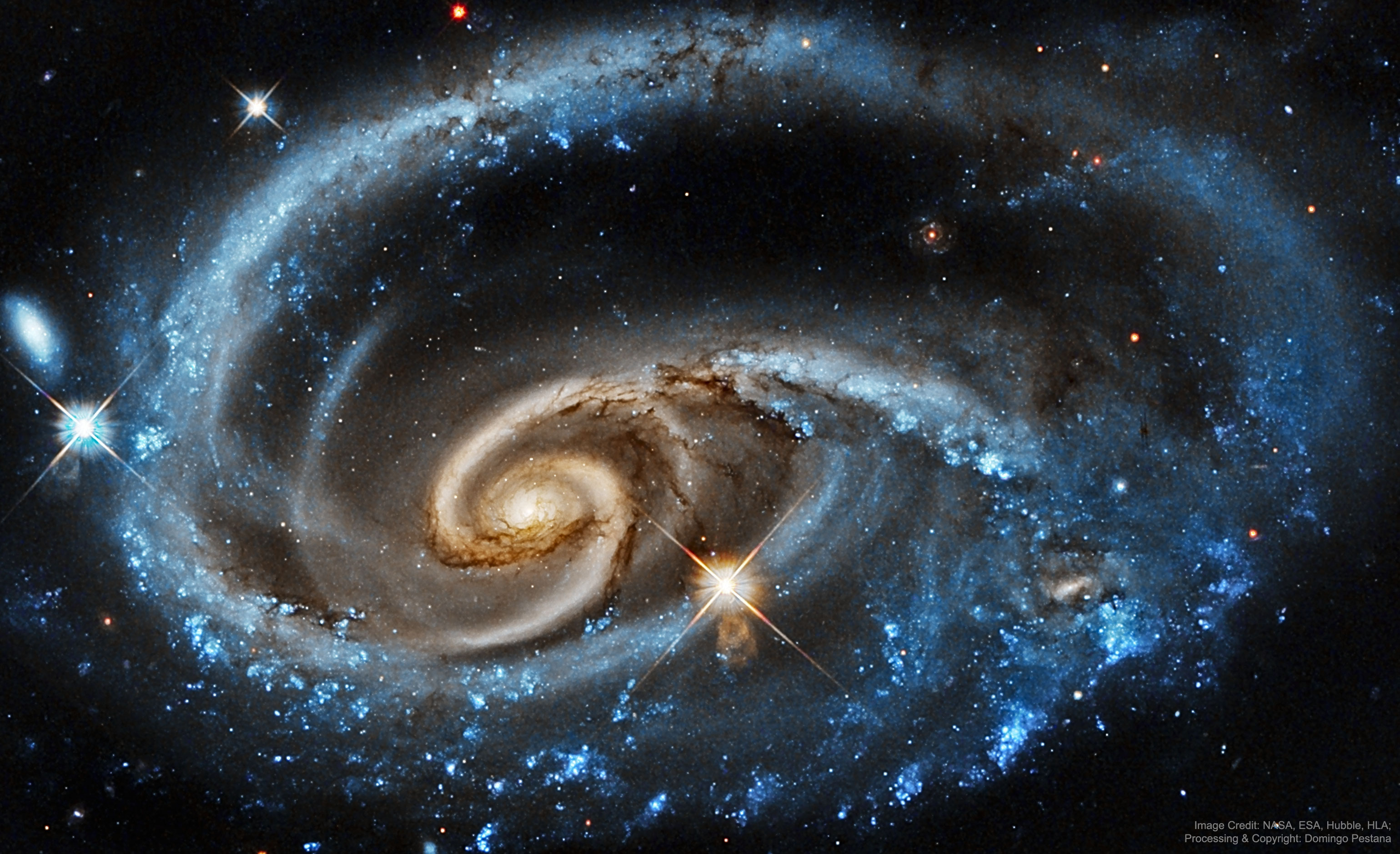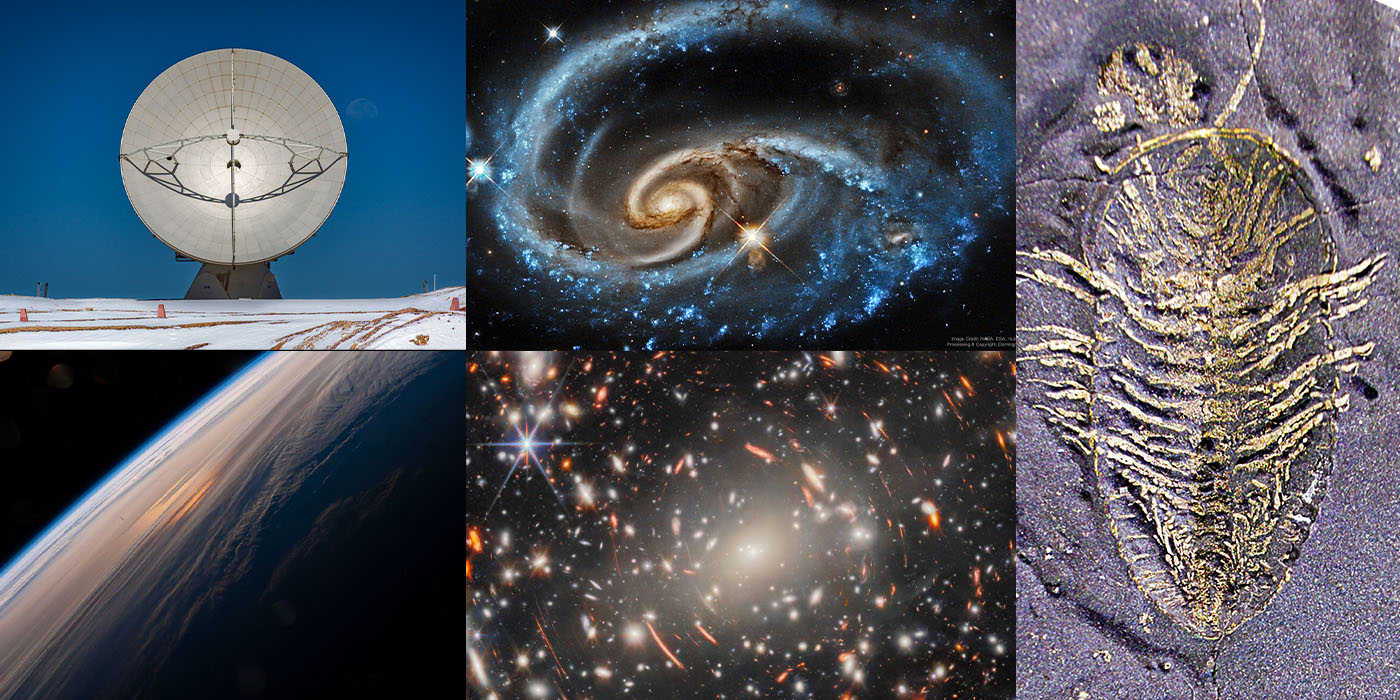
While space telescopes like JWST and Hubble help us peer back into the deep history of the universe, on Earth, fossils tell the stories of our past. This week, we observe a massive galaxy cluster and a strange, gravitationally influenced galaxy. Plus a pyrite-filled fossil, an orbital sunrise, and the Moon next to a ground-based radio telescope dish.
Monday, 2 June 2025
The Distant Past
In this new NASA/ESA/CSA James Webb Space Telescope picture, the eye is first drawn to the central mega-monster, galaxy cluster Abell S1063. This behemoth collection of galaxies, lying 4.5 billion light-years from Earth in the constellation Grus (the Crane), dominates the scene. Looking more closely, this dense collection of heavy galaxies is surrounded by glowing streaks of light, and these warped arcs are the true object of scientists’ interest: faint galaxies from the Universe’s distant past.
This new imagery from Webb’s Near-Infrared Camera (NIRCam) showcases an incredible forest of lensing arcs around Abell S1063. These arcs reveal distorted background galaxies at a range of cosmic distances, along with a multitude of faint galaxies and previously unseen features.
Tuesday, 3 June 2025
Trilobite!
Triarthrus eatoni is a trilobite of the family Olenidae and the order Ptychopariida. This fossil was collected from the Frankfort Shale, Sixmile Creek in Cleveland's Glen, near Rome, Oneida Co., New York, USA, from the Upper Ordovician (Caradoc, 458 to 448 mjo). It shows the biramous appendages and antennae deposited as pyrite.
Wednesday, 4 June 2025
Peering Over ALMA's Shoulder
Two large, pale discs can be seen in today's PPOD: one of them in the Atacama Desert, the other orbiting the Earth 384,000 km away. The latter is our ever-present Moon, faintly hanging in the clear blue sky. Next to it is the real star of the image: one of the antennas of the Atacama Large Millimeter/submillimeter Array (ALMA).
ALMA, which ESO operates together with international partners, is made up of 66 such antennas, spread out atop the 5000-m high Chajnantor Plateau in Chile. Unlike optical telescopes, which gather light in wavelengths that we can see, these dishes observe the cool corners of the Universe using longer, invisible wavelengths — somewhere between infrared radiation and radio waves.
These antennas work together, creating a huge virtual telescope with a complex technique called interferometry. By adjusting the separation between the antennas, which can go up to 16 km, astronomers can study cosmic objects in different levels of detail. With all of its individual dishes working together in perfect harmony, ALMA truly becomes more than the sum of its parts.
Thursday, 5 June 2025
Wildly Interacting Galaxy
Here you can see the galaxy catalogued as UGC 1810 by itself, but with its collisional partner, it is known as Arp 273. The overall shape of the UGC 1810 -- in particular its blue outer ring -- is likely a result of wild and violent gravitational interactions. This ring's blue color is caused by massive, super-hot stars that formed only in the past few million years. The inner galaxy appears older, redder, and threaded with cool filamentary dust. A few bright stars appear in the foreground, unrelated to UGC 1810, while several galaxies are visible well in the background. Arp 273 lies about 300 million light years away toward the constellation of Andromeda. Quite likely, UGC 1810 will devour its galactic sidekick over the next billion years and settle into a classic spiral form.
News
Related News

Mars’s Ancient Carbon Cycle: How Rocks on Mars Tell the Story of a Vanishing Climate
#SETI Live Blog #Mars #Astrobiology #SETI #Solar System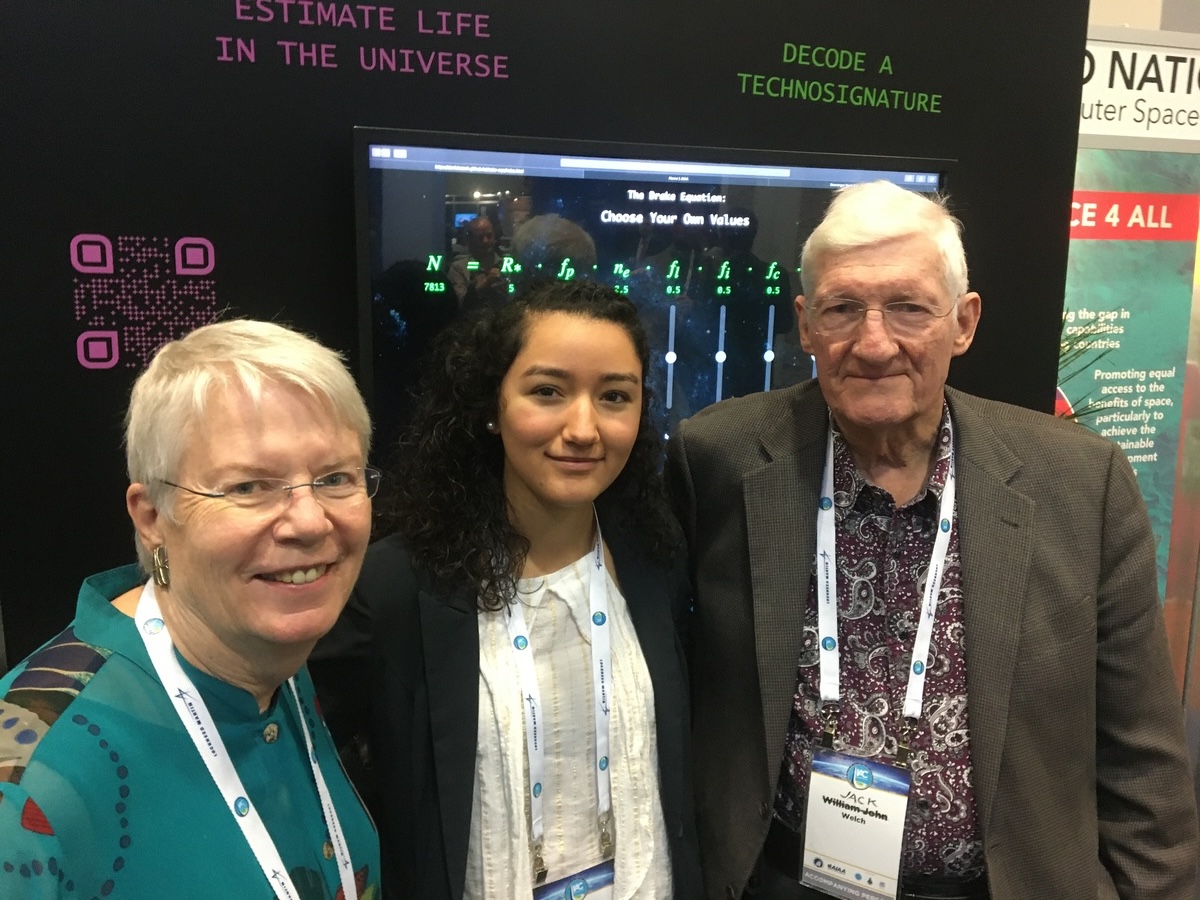
SETI Institute Names First William J. Welch Postdoctoral Fellow
#Press Releases #ATA #Fellowships #SETI #Hat Creek Radio Observatory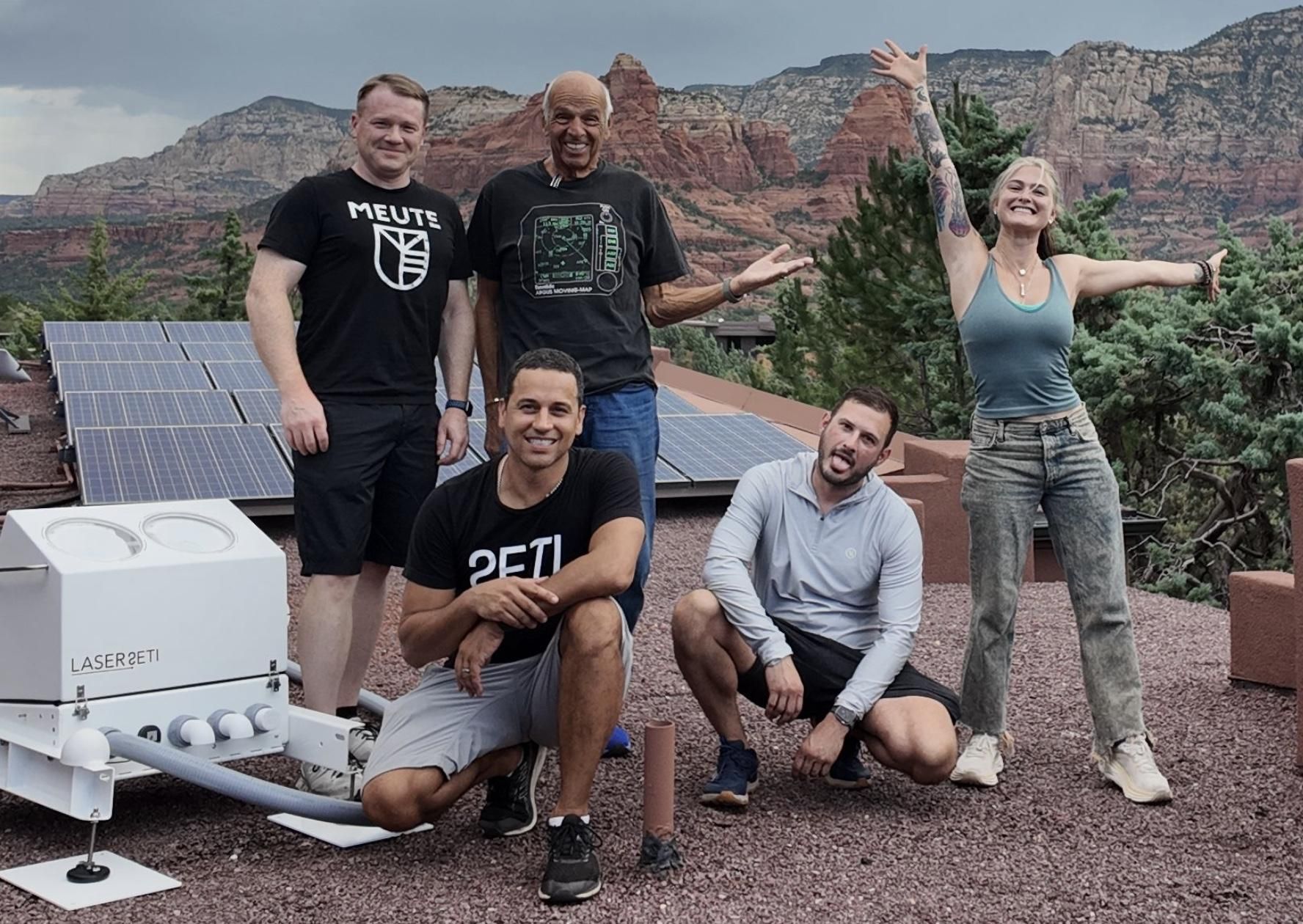
Searching for Life from the Rooftops
#LaserSETI #SETI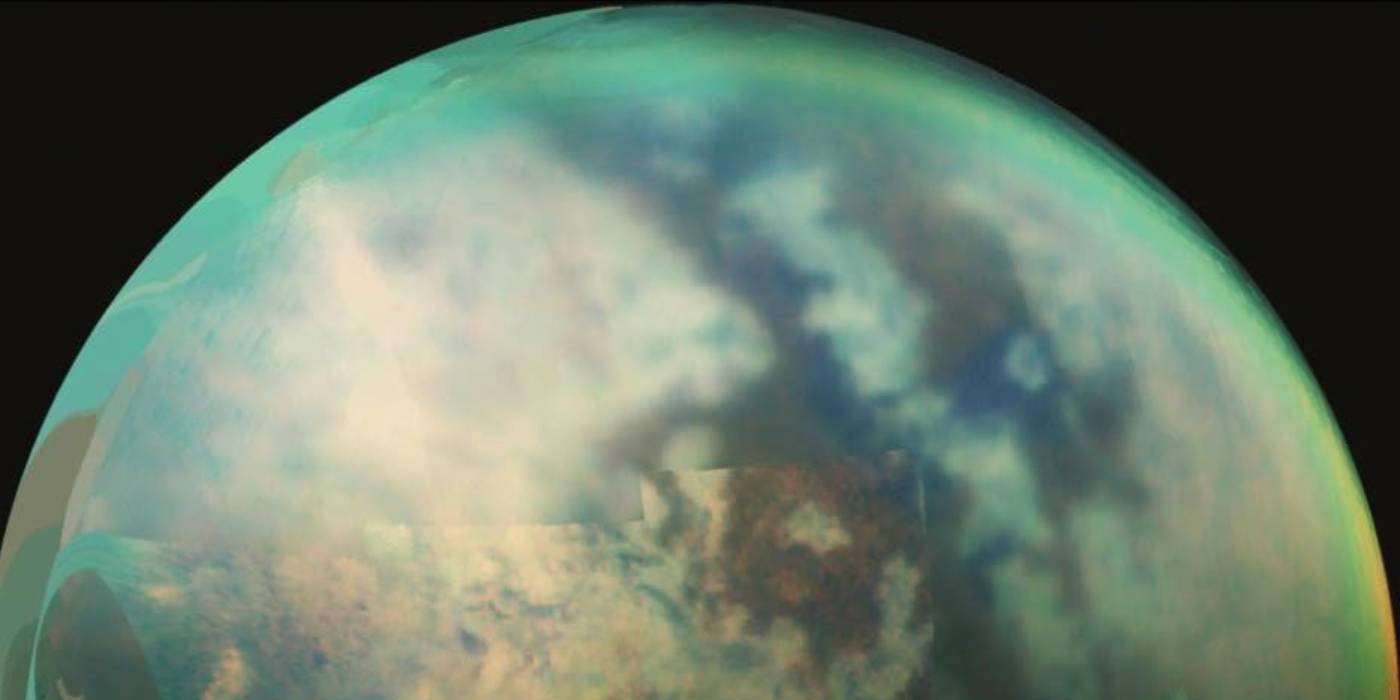
Titan’s Missing Deltas? What Cassini Saw — and What It Didn’t
#SETI Live Blog #Solar System #Astrophysics #Astrobiology #NASA Missions and Observatories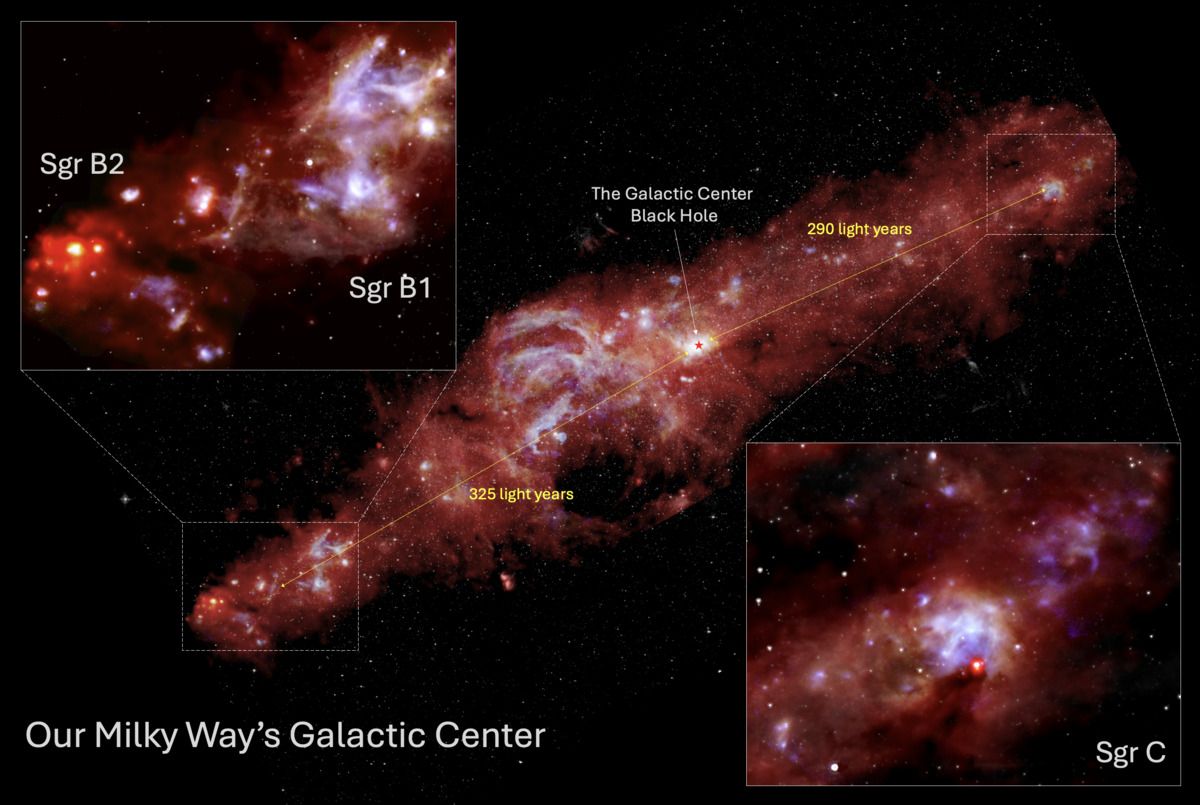
Unusual Stellar Nurseries Near Our Galaxy’s Center Puzzle Scientists
#Press Releases #SOFIA #NASA Missions and Observatories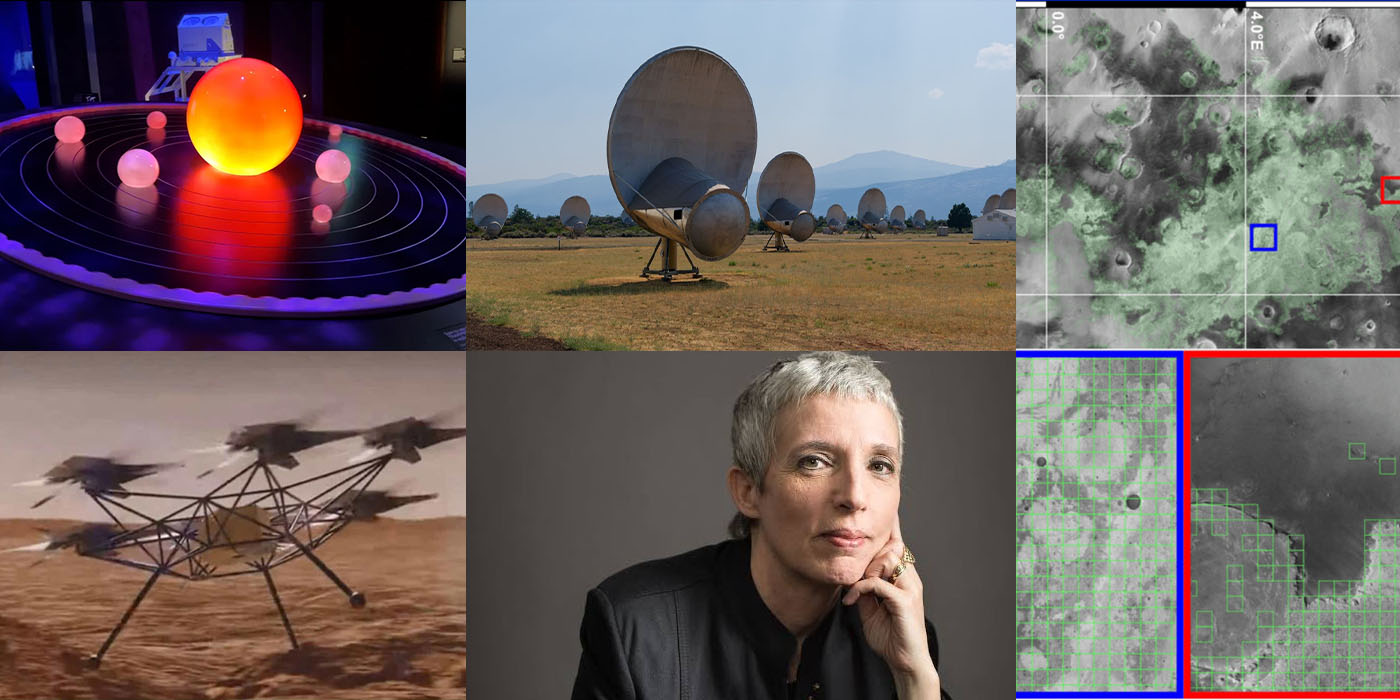
SETI Institute in the News: May Roundup
Research
Related Projects
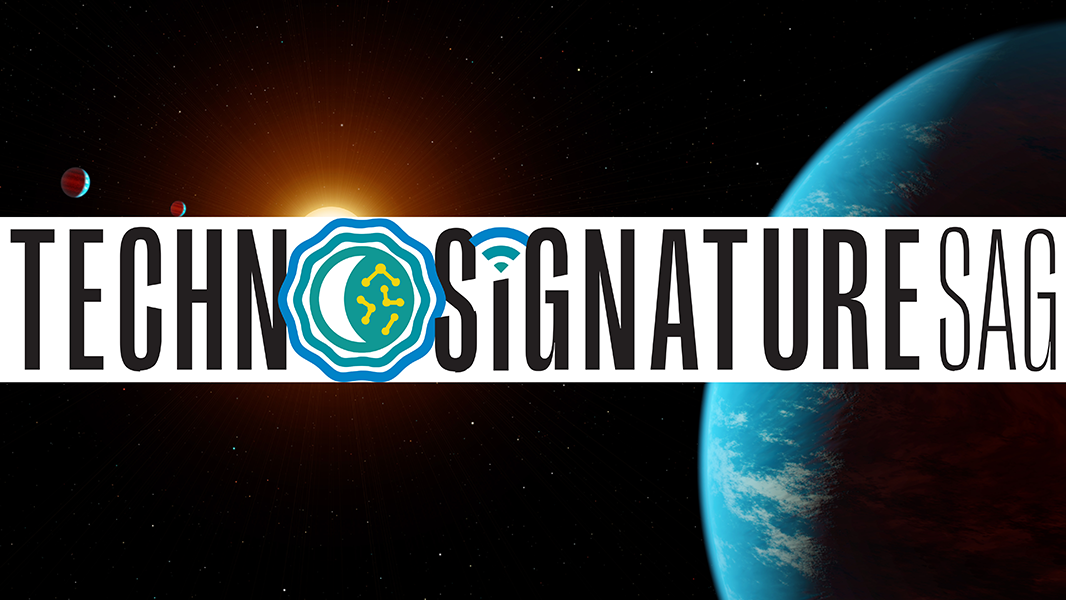
Technosignatures SAG
Technosignatures SAG is a group of volunteer experts who have been chartered by NASA to produce a report to NASA’s Exoplanet Exploration Program, containing the results of its analysis on how NASA can better integrate technosignature search into its portfolio. #Technosignatures SAG #Technosignatures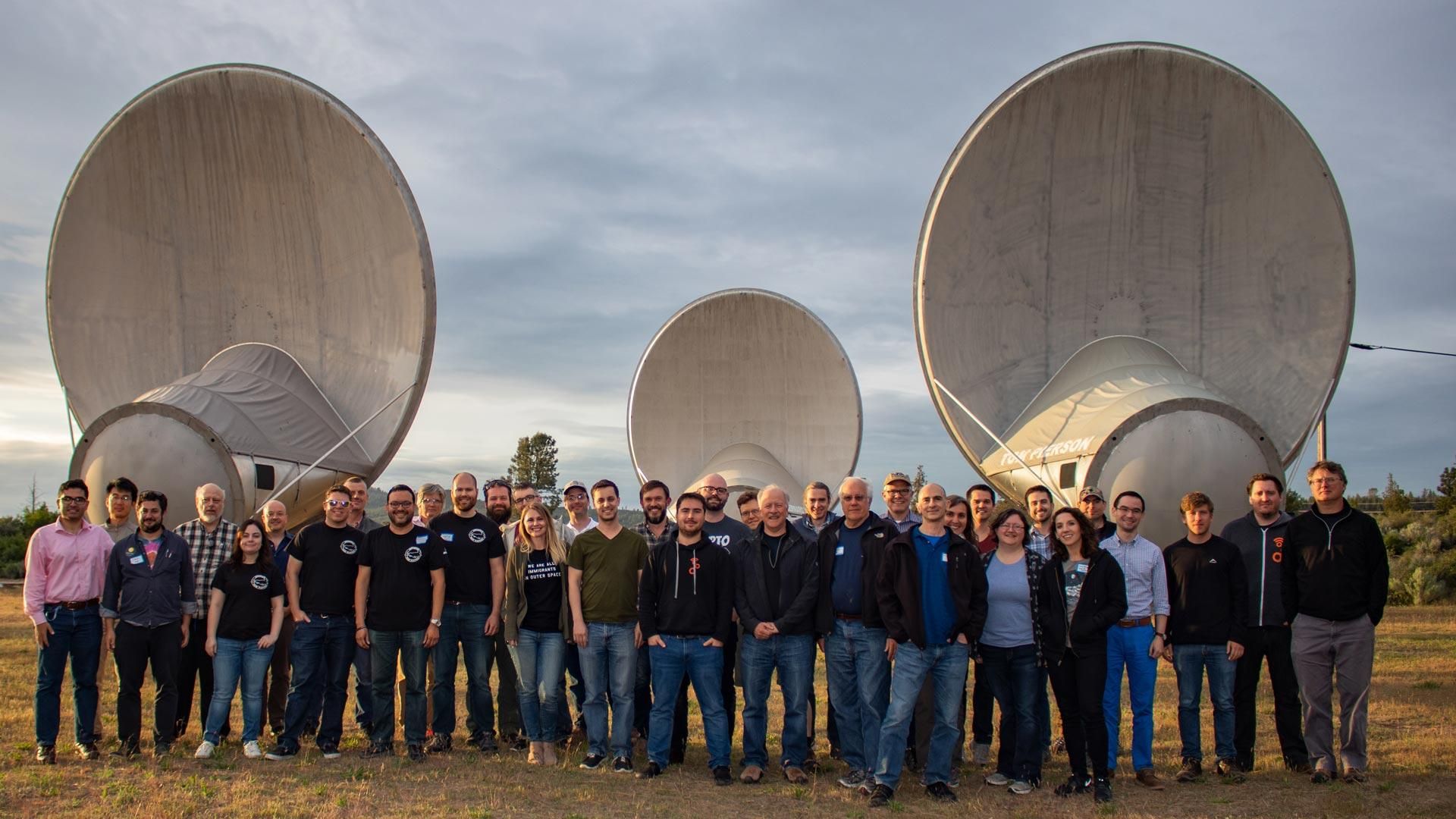
GNU Radio and SETI
GNU technology could revolutionize the development of receiving equipment for SETI (and for radio astronomy in general.) It promises to speed the design of new receivers, and to allow scientists to quickly change how data are analyzed and displayed. #GNU Radio #Radio Astronomy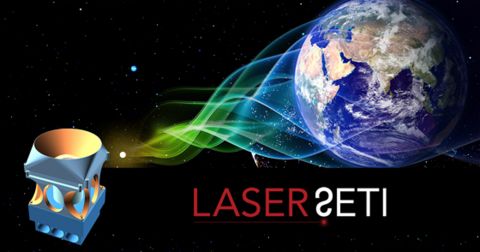
LaserSETI
SETI Institute’s LaserSETI program is building a network of instruments to monitor the entire night sky. This network represents an unprecedented growth in the continuing search for manifestations of sophisticated intelligence beyond Earth. #LaserSETI #Optical SETISupport the
SETI Institute
Scientists are getting closer in their search for life beyond earth. But with limited federal funding for the search for extraterrestrial intelligence, supporters are the reason cutting-edge scientists can keep their eyes on the sky.
)

